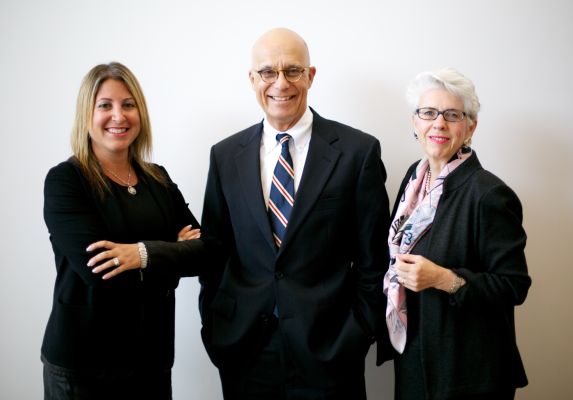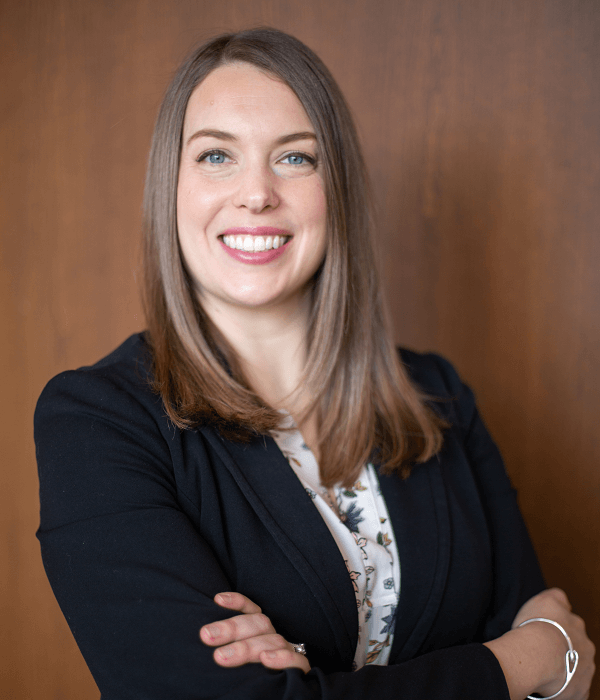ADR in the Golden Years: The Case for Using Alternative Dispute Resolution in Gray Divorces
Originally published in PBA Pennsylvania Family Lawyer, Volume 45, Issue No. 3, Fall 2023.
By: Lindsay H. Childs, Esquire
As a family law practitioner, you have likely heard the term “gray divorce.” It seems that there are an increasing number of programs regarding how to handle a divorce for clients who are in their “golden years,” i.e., clients aged 50 and older, who are either approaching or already at retirement age. This is for good reason – the divorce rate for older Americans has been increasing, so a significant portion of family law cases involve spouses who are no longer working or will be retiring soon.
According to a 2017 Pew Research Center Article, the divorce rate for adults aged 50 and older has increased significantly over the past three decades, increasing as much as 300% for those 65 and older between the years 1990 and 2015. A 2022 study found that although the divorce rate may have plateaued for adults aged 50 to 65, those aged 65 and older still have an increasing divorce rate.
Handling a divorce for clients who are older requires an understanding of their unique needs and concerns. There may be little to no prospect of future income or acquisition of assets, and at the same time there is a higher incidence of medical issues and physical limitations that lead to greater expenses. Retirement benefits may already be in pay status, estate plans may have come into play, and income may be limited to government benefits.
But in addition to involving different substantive issues, cases with older clients may involve other practical considerations. The litigation process may be overly stressful for the elderly, both mentally and physically. The use of technology that has become standard in court cases may be a hurdle for those clients who have not grown up with these advances as a part of their lives. They may be in more of a rush to finalize their divorce so that they can enjoy the remaining years of their lives, whereas the court process can drag on for several years.
For these reasons, family law practitioners should seriously consider alternative dispute resolution for their gray divorce cases. Collaborative law, mediation and arbitration are all options that would allow older clients to resolve the division of their marital estate and issues of support more efficiently and amicably. For example, the collaborative law process lends itself well to the use of jointly retained experts who can provide valuable assistance and assurance. A financial advisor can guide older clients towards a settlement that realistically fits within each party’s budget even after they are no longer earning an income. Estate and tax attorneys can advise spouses on the best way to maximize their net income and their financial legacy when crafting an agreement to divide their assets. And the commitment to cooperation that is at the core of collaborative law provides a healthier environment for older clients who could be more vulnerable to the strain of litigation.
With mediation, older clients are able to find creative solutions to the division of their estate that would be difficult to achieve in court, where the hearing officers and judges are constrained by the strict parameters of the law. It can be terrifying for these clients to put their economic future in the hands of a stranger. Mediation provides an opportunity for clients to fashion an agreement themselves, giving them more control over the outcome in crafting a resolution that fits their unique needs. For older clients who are trying to preserve their limited financial resources, mediation can also provide a more cost-effective solution.
Even in cases where a factfinder needs to make a decision, submitting the case to binding arbitration may be a better answer than heading to court. There is an abundance of experienced and knowledgeable arbitrators in our state who are specifically trained to handle family law cases. They can address complex valuation and distribution issues for large marital estates, as well as support and alimony claims, related to long term or later-in-life marriages. With this process, you get the benefit of an arbitrator who will stay on top of discovery deadlines and promptly address interim issues, while also providing flexibility with scheduling and individualized attention to the specific needs of the parties. Finally, with there being little chance that custody issues will be involved for clients in this age bracket, the entire case can be completed in binding arbitration, without any need for court approval or future modification.
Whether your older clients have significant assets or a minimal estate, there is an alternative dispute resolution process that could be the right fit for their case. As part of your initial meeting with any client, but particularly those who are aged 50 and older, you should explain the different options and discuss how each process might benefit your client.
About Lindsay H. Childs, Esq.
Lindsay H. Childs, Esquire, is a partner at Vetrano Vetrano & Feinman LLC in King of Prussia, Pennsylvania. In 2020, the American Bar Association published a book authored by Ms. Childs, titled “Divorce in the Golden Years: Estate Planning, Spousal Support, and Retirement Issues for Clients in Midlife and Beyond, Second Edition.” Ms. Childs recently spoke at the PBA Family Law Section’s Summer Meeting in July 2023, as part of a panel for the program “Mediation, Arbitration and Collaborative Best Practices.” She is a prior council member for the PBA Family Law Section, and served as the Chair of the Montgomery Bar Association’s Family Law Section in 2022.
About Pennsylvania Family Law Firm Vetrano | Vetrano & Feinman
Vetrano | Vetrano & Feinman LLC is a family law firm in Main Line Pennsylvania that provides dedicated and experienced legal services to the community. The firm’s family lawyers are advocates of collaborative divorce and their family-centric approach attempts to enable clients’ families to remain intact for the overall good of the family.
If you have questions about alternative dispute resolution in gray divorces, or if you would like more information about Lindsay H. Childs, or Vetrano | Vetrano & Feinman, please visit www.vetranolaw.com or call 610-265-4441.
[1] Renee Stepler, Led by Baby Boomers,Divorce rates up for Americans 50 and older, Pew Research Center, March 9, 2017, http://www.pewresearch.org/fact-tank/2017/03/09/led-by-baby-boomers-divorce-rates-climb-for-americas-50-population/ (citing data from the National Center for Health Statistics and U.S. Census Bureau).
[1] Id. See also, Kennedy, S. & Ruggles, S., “Breaking Up Is Hard to Count: The Rise of Divorce in the United States, 1980-2010,” Demography, April 2014, Volume 51, Issue 2, pp 587-598, available at https://doi.org/10.1007/s13524-013-0270-9.
[1] Brown SL, Lin IF. The Graying of Divorce: A Half Century of Change. J Gerontol B Psychol Sci Soc Sci. 2022 Sep 1;77(9):1710-1720. doi: 10.1093/geronb/gbac057. PMID: 35385579; PMCID: PMC9434459.

Need to Talk to Us?
Our experienced family lawyers take the time to fully understand the financial and emotional complexities that can be involved in separating two lives. We offer the patience and resources to effectively guide clients through a divorce, addressing all the challenges they may face in moving forward with their lives. To learn more about how we can help protect your rights and interests in a complex divorce, contact the Pennsylvania divorce attorneys at Vetrano | Vetrano & Feinman LLC.
